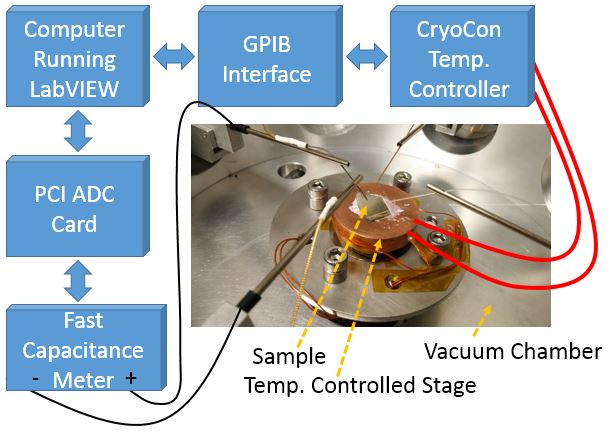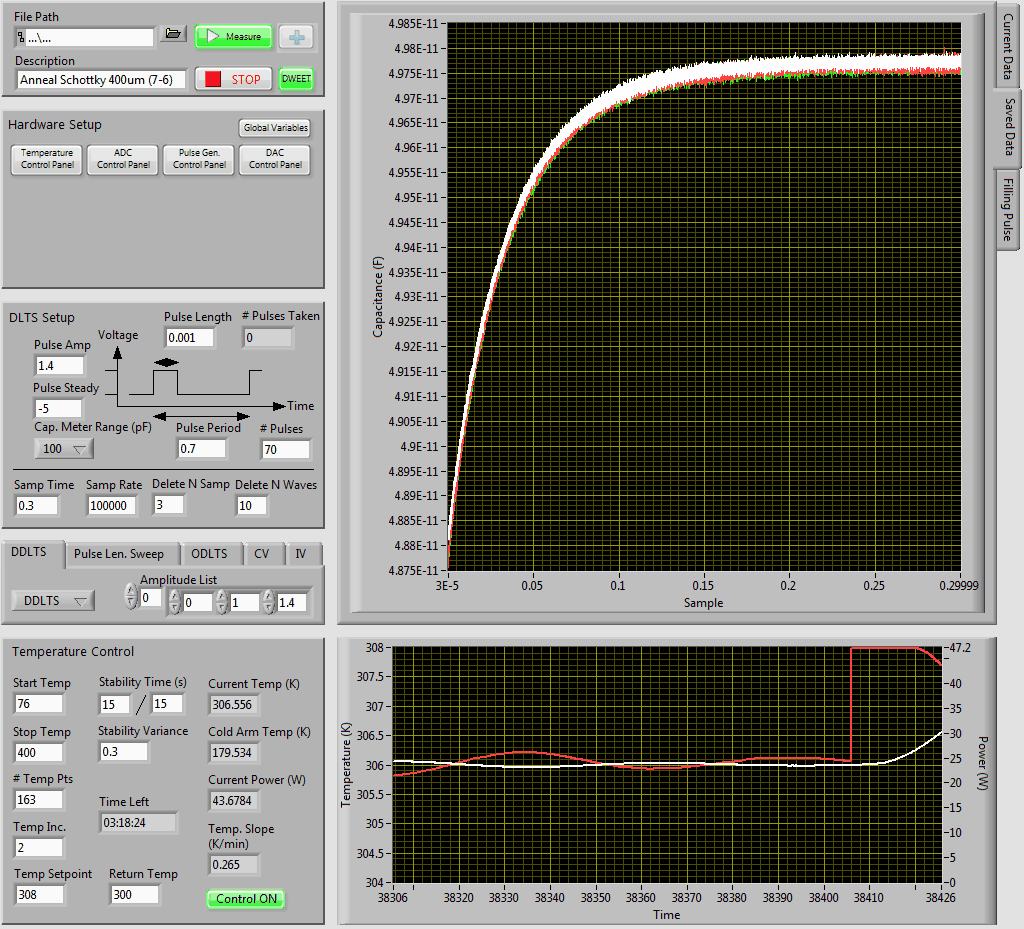Problem:
Deep Level Transient Spectroscopy (DLTS) is very interesting to me since it is such a simple measurement that can yield information about very complex details regarding semiconductor material. Part of my PhD thesis will be understanding defects found in gallium nitride (GaN) that can cause PN junctions to fail or at a minimum not produce results indicative of ideal material. Defects like vacancies (missing atoms), anti-sites (atom in the wrong spot), interstitials (atom crammed into spot where there shouldn’t be one) and even impurities like oxygen, carbon, or magnesium can be detected in quantities that are 1/1,000,000,000 the amount of gallium or nitrogen.
Solution:
The measurement setup is pretty simple and is depicted below. As mentioned previously, many types of defects can be incorporated into a grown semiconductor. However, its the ones that are electrically active and create a source of electron or hole trapping that can cause a problem. When a depletion region is generated either by a metal, p-type layer, or metal-oxide interface, traps that fall below the fermi-level are depopulated. They can be repopulated by moving the fermi level to a point that would repopulated which can be easily done by applying a voltage. We can see the effects of this populating and depopulating manifest itself as an exponential decay in the capacitance of the device. If we knew there was only one type of defect that acts like a trap then we might be done after a single measurement, but most of the time there are many. In order to selectively measure each trap, we can lower the temperature and thereby lowering the possibility that it would react to the changing voltage. Then we take measurements as the temperature rises and save the data for processing.
DLTS Setup

One of the problems with these measurements is that they take a long time (>9hrs). Realizing this I created a LabVIEW program to automate the collection of the data so that I can continue other work around the lab. I’m always adding more features to it but right now it can do DLTS, ODLTS, CCDLTS, IVT, and TSCAP measurements automatically.
DLTS Main Program

Pictured above is the DLTS main program first waiting for the temperature to stabilize at 308K and then measuring the capacitance transients using the parameters listed in the ‘DLTS Setup’ section of the program.
CV Accessory Program

In addition to DLTS measurements, the physical setup of the sample allows for C-V-T measurements to be executed before changing sample temperature.
